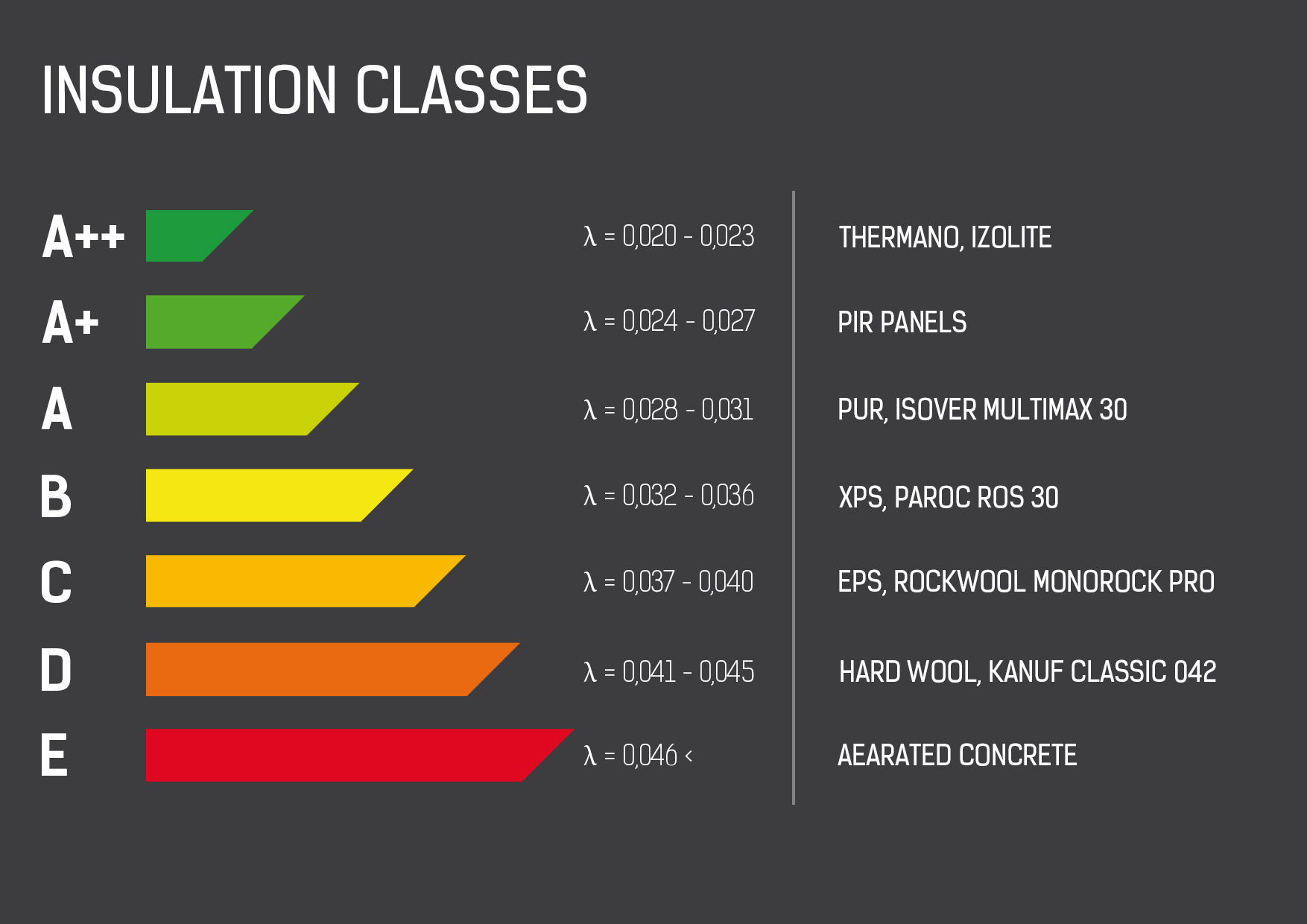How can we install thermal insulation over the rafters of a pitched roof?
Instructions for installing Thermano thermal insulation over the rafters of a pitched roof
Instructions for installing double-layer Thermano thermal insulation over the rafters of a pitched roof
When the thermal insulation panels are installed in two layers they provide excellent protection against both low and high outdoor temperatures. An additional advantage is the significant pressure and gas sealing characteristics of the entire thermal insulation system. Installing two layers of Thermano panels is similar to installing a single layer.
Most heat escapes a building through the roof when its thermal insulation barrier is poor. A good roof thermal insulation system provides both great indoor thermal comfort and savings on heating costs. The PIR-core sandwich panels are the best choice when we need superior A++ class insulating materials.
How much does the thermal improvement of a pitched roof cost?
Thermal improvement, or the installation of thermal insulation in a new build, is always a good investment. Thermano reduces home heating costs significantly enough to achieve a 100% return on the investment in 3 to 4 heating seasons.
Step-by-step over the rafter thermal improvement of a pitched roof
The assembly of two layers of insulation panels provides perfect protection against the cold and heat. An additional advantage is the excellent pressure and gas tightness of the entire system. The assembly procedure of two Thermano panel layers does not differ much from the installation of a single layer.
1. You will need the following to install the Thermano panels:
- Thermano panels
- Gauge
- Low-pressure polyurethane foam
- Aluminium sealing tape
- Vapour breathing membrane
- Battens and counter battens
- Set of long and short wood screws
- Planks
2. The installation begins with attaching the planks to the levelled front of the rafter. The planks should be up to 30 cm in length.
3. Next, the first row of the first layer of Thermano panels is placed. It is very important to attach the following rows in a staggered manner, that is alternately. In the case of the first thermal insulation layer, the protection of the joints between panels with aluminium tape is not necessary but it is recommended.
4. The panels may be fixed to the rafter using stabilising screws. If the weather conditions are favourable at the time of installation – no wind and precipitation – there is no need to additionally secure the Thermano panels. This was the case with the construction presented here.
5.Thermano panels are laid successively – row after row, gradually covering the first layer of panels with the next – surface one. The joints between the panels in the second layer must be secured with aluminium tape in order to ensure maximum thermal tightness of the entire system. Vapour breathing membrane is simultaneously placed on the panels that are already laid and the assembly of battens and counter battens is started in a given row.
6. Screws will be necessary for substructure assembly. The battens are fixed with short screws and the counter battens with long ones. They must pass through the batten, both layers of Thermano panels and anchor at the depth of 30 mm. The long screws are installed every 40 cm, alternately. One perpendicularly to the rafter and the next at a 67o angle, slightly flat.
7.The proper angle is determined using the gauge provided by the manufacturer of Thermano panels. After reaching the roof ridge, remember to fill any gaps with low-pressure foam. The thermal insulation of the ridge must be continuous.
In the example presented here, the investor chose very good protection for the construction. Two layers of 100 mm thick Thermano panels guarantee perfect thermal conditions inside, both during a harsh winter and hot summer. Excellent thermal insulation parameters of Thermano panels are provided thanks to a very low lambda value. Their resistance to moisture and damage caused by rodents makes panels will serve you for decades.
Installing a Thermano thermal insulation system...
-
We can ensure great thermal insulating performance for our home, to last for generations. The PIR-core sandwich panels are extremely durable, with a service life comparable to that of a masonry brick. Thermano does not absorb water and perfectly resists infestation and damage from vermin, including rodents, martens and birds.
-
We go green. A high-performance thermal insulation system reduces heating power consumption, which in turn reduces the emission of pollutants into the air.
-
The PIR-core sandwich panels are great for over-the-rafter installations. This installation option offers the best protection against building heat losses, since the thermal insulation features no cold bridges.
See more
- Instructions for installing Thermano in flooring
-
Instructions for installing Thermano thermal insulation under the rafters of a sloping roof
- Instructions for installing Thermano on a green roof
-
Instructions for installing the Thermano thermal insulation system on a cavity wall
If you have any questions, please contact Thermano technical consultants.
+48 801 000 807
